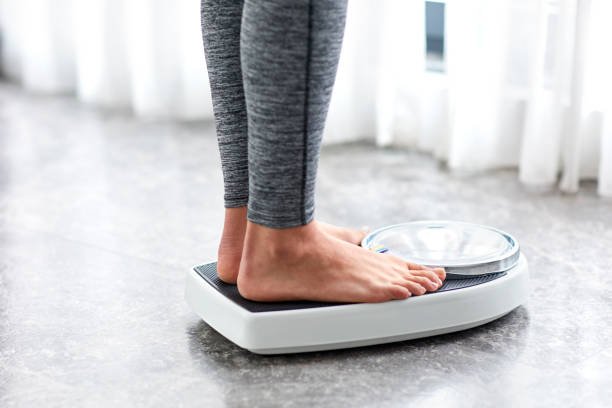Your waistline can tell more than your weight ever could. That’s because the size of your waist gives a direct look at how your metabolism, hormones, and internal inflammation are working.
And if your waist is growing, even if your weight hasn’t changed, it’s often a sign your body needs attention.
Waist circumference can reveal silent risks long before blood sugar or cholesterol show up on a lab test. Let’s talk about why waist circumference matters, how to measure it, and what it can reveal about your health.
What Waist Circumference Actually Tells Us?
Waist circumference is the measurement around your midsection, taken just above the hip bones. It tells us how much visceral fat you carry around your abdomen. Unlike the soft fat under your skin, visceral fat wraps around your internal organs and has profound effects on your health. It increases cortisol, disrupts insulin, and throws off key hormones.
Research consistently shows that increased waist size is tied to a greater risk for serious health issues. People with larger waist circumferences are more likely to develop insulin resistance, high cholesterol, fatty liver, hormone imbalances, and even memory problems later in life.
Why We Prioritize Waist Circumference Over Weight
Weight can fluctuate with hydration, muscle mass, or time of day. BMI alone doesn’t distinguish between fat and muscle. That’s why we pay closer attention to waist circumference. Because it gives us a clearer view of what’s happening beneath the surface, especially around your metabolic and hormonal health.

A growing waistline is often linked to:
- Higher risk of type 2 diabetes
- Elevated cholesterol and triglycerides
- Development of fatty liver disease
- Cognitive changes, including a greater risk of Alzheimer’s
- Hormonal shifts, such as estrogen dominance or low testosterone
- Increased chance of cardiovascular events
At Kairos, we often use waist measurement as an early warning sign, helping patients catch issues like prediabetes or sluggish thyroid function before they show up on labs.
What’s a Healthy Waist Circumference?
Here are general guidelines for adults:
- Women: Less than 35 inches (88 cm)
- Men: Less than 40 inches (102 cm)
You should aim for your waist circumference to be less than half of your height (in inches). For example, if you’re 5’6″ (66 inches), your waist should ideally be under 33 inches.
The Hidden Causes Behind a Growing Waist
We see this all the time: patients doing all the right things but still gaining belly fat. The truth is, your waistline responds to much more than calories or carbs.
Here are some common root causes:
1. Insulin Resistance
Even before blood sugar rises, your body can become less responsive to insulin. That means you store more fat, especially in the midsection. This often comes with energy crashes, sugar cravings, or stubborn weight gain around the belly.
2. Chronic Stress & Cortisol
Stress is one of the most common reasons for stubborn belly fat. When your stress hormones stay high, they signal your body to store fat, especially around the waist. If you feel constantly tense, anxious, or on edge, your belly might be reflecting that too.
3. Hormonal Imbalances
Perimenopause, estrogen dominance, low testosterone, PCOS, these can all contribute to central weight gain, even when eating clean.
4. Thyroid Slowdown
An underactive thyroid slows your metabolism and reduces your ability to burn fat efficiently. This often shows up as belly fat, fatigue, and cold sensitivity.
5. Fatty Liver
The liver plays a big role in fat metabolism. If it’s inflamed or overwhelmed, your waistline may reflect it before your labs do.
6. Gut Issues or Food Sensitivities
Some patients think their waist gain is fat, but it’s actually bloating or fluid retention from leaky gut, constipation, or food reactions, especially from gluten or dairy products.
How We Investigate Waist Size at Kairos
Most clinics will tell you to eat less and move more. But at Kairos, we run targeted panels to find out why your body is holding on to fat or inflammation:
- Fasting insulin and glucose to detect early metabolic dysfunction
Thyroid and cortisol testing to understand hormonal stress - Advanced lipid panels to evaluate LDL particle size and cholesterol risk
- Liver enzymes to check for fatty liver or detox stress
- Micronutrient testing to find gaps like magnesium, choline, and omega-3s
- Stool testing is performed if gut inflammation or dysbiosis is suspected
When needed, we also check hormone panels, cortisol curves, or gut markers.
Ask Yourself These Questions
- Has my waist gotten bigger, even though I’m eating the same?
- Do I feel more tired, bloated, or puffy around my stomach?
- Has my doctor only focused on my weight, not my thyroid, insulin, or liver?
- Am I just treating symptoms like cravings or fatigue without knowing why?
If you answered yes to any of these, your waist isn’t the real problem; it’s your body’s way of asking for deeper help.
Let’s Find Out What Your Waist Is Trying to Tell You
Your waistline gives us real clues about your health. If you’re noticing belly fat, low energy, or changes that don’t match your habits, Lola, one of our board certified nurse practitioners, can help you explore what’s going on beneath the surface using functional testing and expert care.
We are based in Houston, Sugar Land & surrounding areas 77046 & 77478. We accept most major insurance plans, including Aetna, Cigna, BCBS, UnitedHealthcare, Tricare & more.




